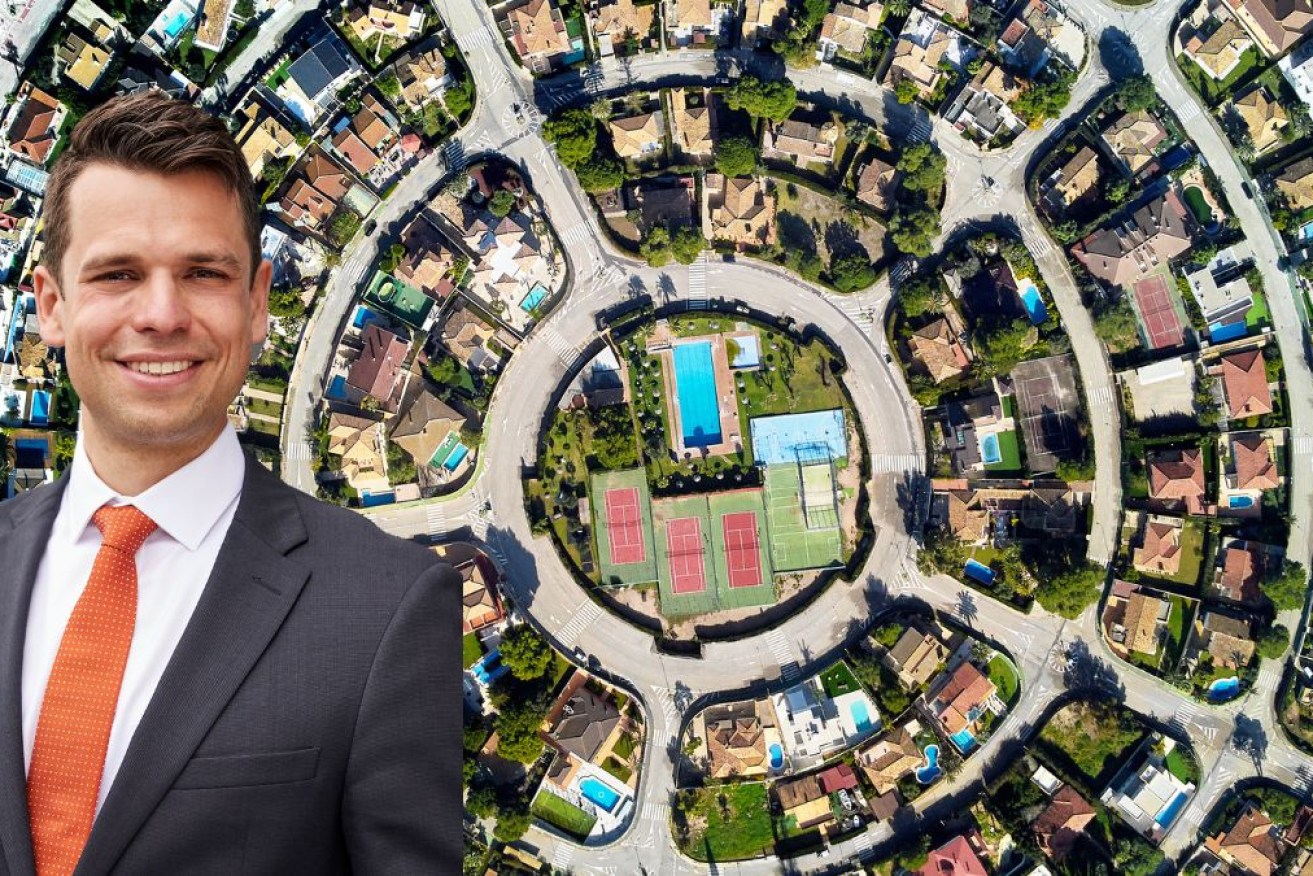Our national obsession with homeownership, the large post-war population, female liberation and the introduction of affordable cars reshaped our cities – not necessarily for the better. We must now reshape our cities again to ensure we build an Australia that works for us all.
Let’s quickly recap how we got here.
From the beginning, European settlers jumped on the opportunity to own a little land, a home, and shelter their families. Migrants travelled from far away on one-way tickets seeking a better life. Home ownership allowed them to control their lives a bit more.
After the war, a sense of optimism (as well as some pent-up desires) led to a Baby Boom. As these Boomers (born 1946-63) came of age, they established new social norms. Women entered the workforce at scale; households went from one to one-and-a-half incomes; disposable incomes skyrocketed; productivity and wages grew roughly in sync; households used their newfound wealth to purchase labour-saving devices (vacuum cleaners etc.) and cars.
Family sizes shrank too, but every kid needed their own bedroom, so affordable land was released on the urban fringe (now middle suburbs) and Baby Boomers moved onto large residential blocks. White-collar workers commuted in their cars to the CBD while blue-collar workers drove to their factories.
By the 1980s, the inner suburbs emptied. Our cities looked like doughnuts. Nobody lived in the centre, and everyone clustered in the suburbs. As Australia transitioned into a knowledge economy, our city centres became popular again. Fewer workers commuted to factories while more commuted to the city centre. Simultaneously, our universities were gradually defunded and made up the gaps by attracting more and more fee-paying international students to the city centres.
Eventually, this unrestrained urban sprawl created serious problems. Our cities looked like fried eggs , with all the juicy jobs clustered in the yolk. Everyone commuting in and out of work at the same time in a star-shaped pattern is the perfect recipe for gridlock. Wealthier workers simply paid a premium to live close to the city centre while poorer workers were stuck with longer commutes. This segregated our cities increasingly along socio-economic lines.
Housing became so unaffordable that people in Sydney now pay about 13 times the median annual income for a median house. Considering that the international benchmark for a “severely unaffordable” housing market is five times the yearly income, we are almost at a loss for words to describe just how hard it is to buy a home these days.
Ever-increasing house prices led to further sprawl and loss of green spaces. To keep housing costs somewhat down, we shrank block sizes. The house now takes up almost the entire block. Skimping on the quality of the building was another desperate attempt to keep the overall cost of a house down. Apparently, much of the new building stock will only last for about 35 years. This is, obviously, environmentally irresponsible, but it requires an army of tradespeople that we quite frankly won’t have, as I wrote about in a previous column.
We eventually realised that we needed to densify our cities. Melbourne (1700 residents per square kilometre) and Sydney (2200) record very low population densities. Comparatively sized overseas cities have much higher population densities: Berlin (3000), Paris (3900), Barcelona (4500), or London (6500) for example.
Why don’t these European cities sprawl as much as ours? The answer is simple. They have medium-density dwellings at scale. In Australian cities we talk about the missing middle. The city centre features very tall buildings but instead of building a ring of five to ten kilometres of medium density dwellings we immediately build suburban homes next to the CBD. That keeps density down and house prices up.
Australian geography dictated that every state gets one big city and up to a handful of medium sized cities. That’s it. Our population clusters in a small number of places. Two-thirds of us live in just the five largest cities. We’ve sprawled the living daylight out of these places already. We are not making more land, but we are adding more people and we are giving those people more money (remember that most households operate on dual incomes these days).
To limit urban sprawl, we introduced urban growth boundaries. This further limited the land on which we can build. Sure, that fixes the problem of urban sprawl, but it drives up house prices even more.
We built ourselves into a corner and must find a way out. What should we do now?
We need to ramp up supply. We must build many more homes. We need to build them almost everywhere and we need to build them yesterday.
We must streamline the approval process for new developments. An apartment complex takes about six to eight years from planning to completion. That’s mad. Each council should be given a housing target. Federal funding gets withheld if they fail to approve the adequate number of dwellings. If they fail again the following year, the council gets put under administration. This might sound overly harsh until you’ve spoken with public servants in councils under administration. These guys love working under administration; they get so much more done!
I wrote previously that privately owned businesses won’t service the low-margin end of the housing market. I think it might be time for a state-owned housing developer. Land would be either free (publicly owned) or cheap (no tax), and they could operate without a profit incentive. The mere addition of a state-owned developer to the system might help to streamline bureaucratic processes too.
We need to densify our cities. The most common way of infill development has problems. Knocking down a brick venier on a quarter-acre block to add four to eight townhouses feels like a crammed way of densification to me. It is probably going to be the most common way. This will likely lead to a loss of local green space. Ideally, we would build European-style medium-density dwellings. I don’t see why an appropriately designed apartment would be less desirable than a townhouse. To build a standard Euroblock (think Barcelona), a developer would need to find an area of about 113 metres times 113 metres (12,769 square meters). Such blocks don’t just magically appear in the middle suburbs of Sydney and Melbourne.

Residential buildings. Photo: Getty
We need to add more middle-sized cities. Australia lacks choice. Three cities house half the population. Very few midsized cities of, say, 100,000 to 500,000 people exist. We should seriously be rethinking which of our smaller towns have the potential to grow by a factor of ten. These small towns could easily add Euroblocks and efficiently operate like European cities – think Australian versions of Copenhagen, Oslo, Zurich, Utrecht, or Lyon. We don’t have much to lose at this stage, and I would welcome a few bold experiments in urban development.
Wait! Can’t we just stop migration? This would slow down population growth and solve the housing problem, right? Once the Baby Boomers start dying in the 2030s, Australia might even shrink. Then everything will be easy, right? While a low migration approach would probably drive house prices down, it would not make us better off as a nation. I’ve written in the past about why the skills shortage will persist and why a high migration rate is the only way our future elderly (that’s you, dear Baby Boomers) will receive adequate care in old age.
I’d be open to a low-migration approach once somebody comes up with a way to keep the economy growing and provide a workforce to sustain our quality of life – the demographics suggest that’s not an easy task.
There is of course more to the housing crisis than the past few paragraphs were able to summarise. I hope however that my quick and dirty take on urban development and current demographics helped to provide a bit more context.
Whenever we take an honest look at ourselves, we realise that to improve, to move forward, and to view the world from new perspectives, we must change our lives (Bonus points if you recognise the Rainer Maria Rilke reference here). So too, to improve our cities, we must change our cities.
Demographer Simon Kuestenmacher is a co-founder of The Demographics Group. His columns, media commentary and public speaking focus on current socio-demographic trends and how these impact Australia. Follow Simon on Twitter, Facebook, LinkedIn for daily data insights in short format.










